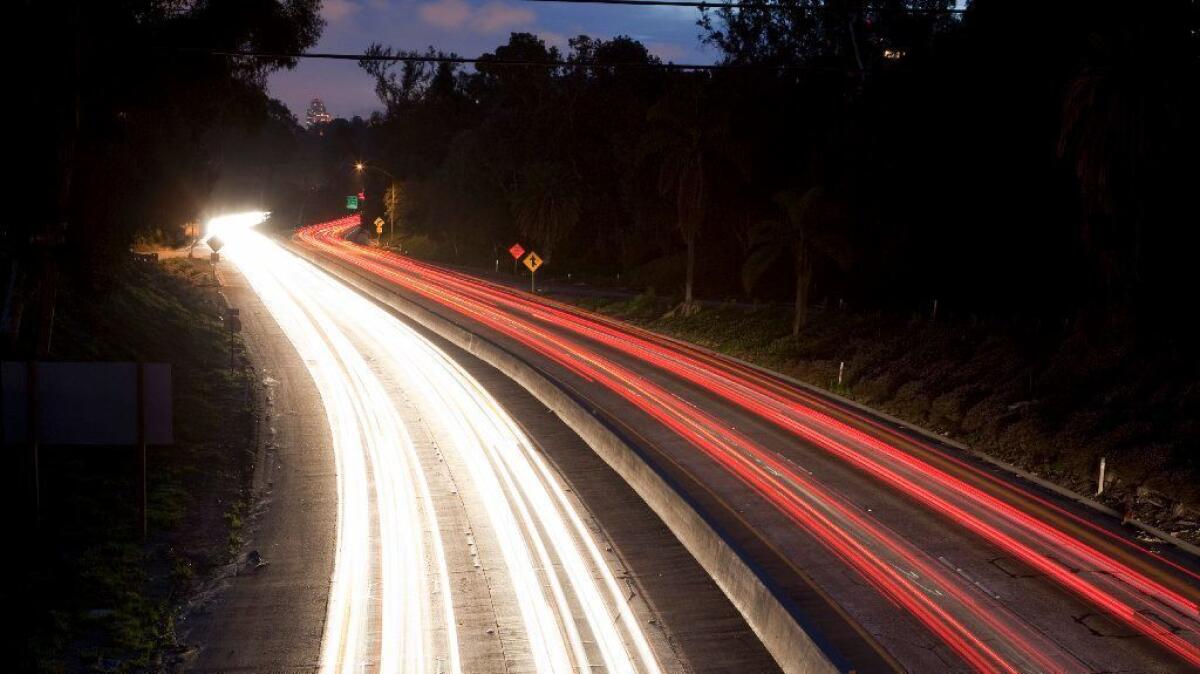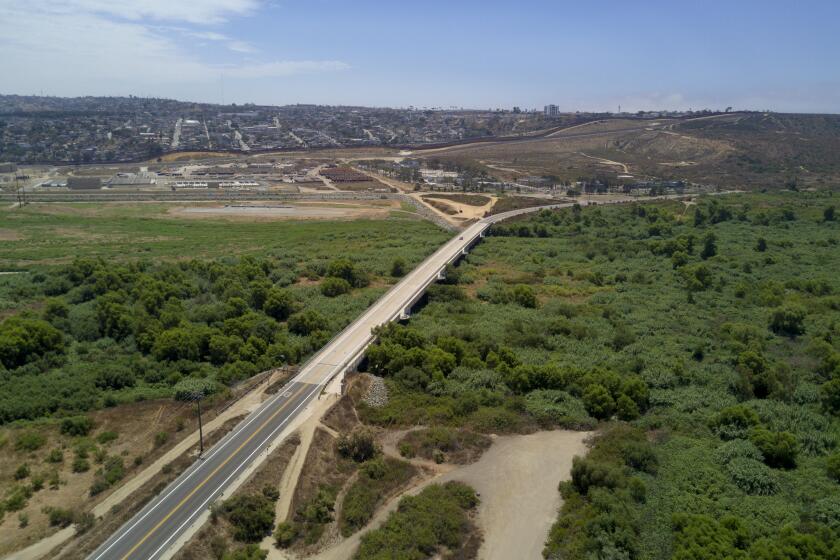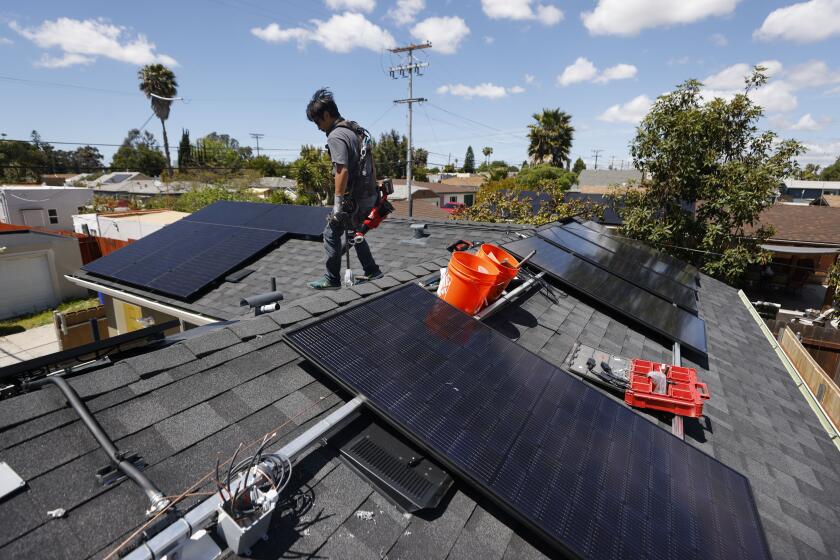San Diego’s efforts to cut greenhouse gases would make small but measurable difference

Whoever thought commuting would be so controversial?
In today’s world, it’s not just your neighborhood being polluted by exhaust from freeways. The entire globe is heating up thanks in large part to largely fossil-fuel-based transportation systems.
Governments, community planners, environmentalists and others have started urgently trying to figure out how to green up our daily commutes.
For those inconvenienced by efforts to save the planet, it can often feel like an entire lifestyle is under attack. And indeed, many on the front lines of the fight against climate change make no bones about their war on cars.
Still, many commuters have few options outside of the solo highway slog. Public transit often doesn’t connect folks to their destinations in a timely manner, especially in sprawling Southern California.
Amid the eco angst and bureaucratic policies, Car Wars attempts to offer some relief in the form of humble facts. And at the very least, you can use the information in this column to debate your friends and sound smarter on dates.
This week, we respond to a frequently asked question that postulates the idea that this whole war on cars thing is just a big waste of time.
Oh, and if you have a query on commuting or anything related to getting around, send it to carwars@sduniontribune.com. We’re doing our best to get to everyone’s questions, which we greatly appreciate.
Allen Stanko of Alpine asks: “Does anybody in their right mind actually think that because San Diego is trying to eliminate traffic on our roads that it is going to make any noticeable difference in global climate change?”
Car Wars: It depends on what you mean by noticeable.
If you mean, will San Diego summers be noticeably cooler as a result of the regional efforts to limit vehicle emissions, then the answer is no. Global warming is more, well, global.
If you mean are we able to quantify reductions in greenhouse gases as a result of certain policies, well then the answer is a resounding yes.
Modeling for this type of work has improved tremendously over the past decade. Reports done to satisfy the California Environmental Quality Act now regularly measure greenhouse-gas emission as a result of, among other things, fluctuation in the number of expected car trips associated with particular projects.
This has given rise to whole host of legal battles concerning whether housing development and other projects are adequately mirroring the state’s timeline for reducing its carbon footprint. That pledge includes cutting greenhouse gases to 1990 levels by 2020 and 40 percent below that by 2030.
A big part of this effort is limiting the use of fossil-fuel-burning vehicles. In California transportation makes up a whopping 37 percent of climate emissions, according to the California Air Resources Board. Nationally that figure is 28 percent, according to the U.S. Department of Transportation.
The air board is now in the middle of updating the state’s blueprint for shrinking such emissions — its 2030 Target Scoping Plan. The Legislature has committed to cutting annual emissions by 182 million metric tons by 2030. If successful, the state’s annual carbon footprint would be about 259 million metric tons.
To get to that ambitious goal, Gov. Jerry Brown has called for only half of all cars in the state to use petroleum-based fuel. Possible? Maybe. Only about 1.9 percent of all new passenger vehicles registered in 2016 were fully electric, according to the California New Car Dealers Association. Still, that’s up from 0.4 percent in 2012, and most analysts predict that electric vehicles will become more popular as more charging stations come on line.
Lawmakers throughout San Diego County also employ carbon-counting analyses to evaluate their strategies to fight climate change. According to the San Diego Association of Governments, 18 cities and the county have now completed inventories of their greenhouse gas emissions.
In the city of San Diego, for example, transportation makes up 55 percent of its climate emissions. To limit that pollution, the city’s blueprint for reducing greenhouse-gas emissions, its Climate Action Plan, calls for half of all commuters living within half a mile of a major transit stop to ditch their cars in favor of biking, walking or using public transportation.
So that you can get a sense of how carefully this stuff is calculated, the proposed shift to mass transit is expected to reduce annual emissions by 213,573 metric tons by 2035. That’s a reduction compared to what it would have been if officials had taken no policy steps, not below today’s levels.
So will you notice the thermometer dropping because of San Diego’s Climate Action Plan? Probably not. But is it making a measurable impact.
RELATED
Twitter: @jemersmith
Phone: (619) 293-2234
Get Essential San Diego, weekday mornings
Get top headlines from the Union-Tribune in your inbox weekday mornings, including top news, local, sports, business, entertainment and opinion.
You may occasionally receive promotional content from the San Diego Union-Tribune.












